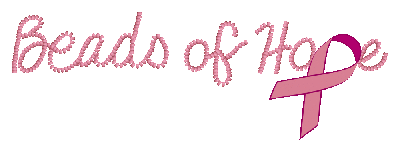Triple-negative breast cancer, TNBC for short, is a type of aggressive and invasive form of breast cancer. TNBC is called “triple-negative” because it tests negative for all three breast cancer protein receptors: estrogen, progesterone, and HER2. Triple-positive and HER2 negative are also types of breast cancer. Having less receptors means that doctors have less options to treat the disease, since most breast cancer treatments target these receptors. Famous TNBC survivors include actress Shannen Doherty and Good Morning America anchor Robin Roberts.

What are the Statistics for Triple-Negative Breast Cancer?
While not as rare as inflammatory breast cancer (IBC), triple-negative breast cancer still makes up only 10-15% of all breast cancer cases. TNBC is more likely to be found in Black women, young women (under 40 years old), and women who are positive for the BRCA1 gene.
What are the Symptoms of Triple Negative Breast Cancer?
Symptoms for triple-negative breast cancer are the same for regular breast cancer. These include breast lumps, swelling and redness, and nipples that are inverted or discharging fluid. One of the best ways to spot these symptoms early is to perform a monthly breast self-exam and get an annual or biannual mammogram.
How Does Diet Affect Triple-Negative Breast Cancer?
While countless research studies have been done to examine diet and breast cancer as a whole, researchers are just beginning to explore how low-fat, and low-animal-protein diets may discourage growth specifically in triple-negative breast cancer cells. Definitive results are not available yet. Currently, doctors recommend a healthy diet, high in vegetables, fruits, chicken, fish, and whole grains, and low in red meats, refined sugar, and processed meats. This lean and plant-based diet has been shown in research to reduce the risk of all breast cancers and many chronic diseases to boot.
What is the Treatment for Triple-Negative Breast Cancer?
Because triple-negative breast cancer does not have receptors for estrogen, progesterone, or HER2, treatment options are more limited than for other breast cancer types. HER2 drugs and hormone therapy are not options for TNBC patients.
For women whose triple-negative cancer has not spread to other parts of the body, breast cancer surgeries like mastectomies and lumpectomies are usually the first treatment option. TNBC is often treated with chemotherapy in conjunction with surgery to either shrink the tumor beforehand, or prevent cancer from returning afterwards. Radiation therapy may also be used.
Some Postmenopausal Women with Breast Cancer May Forgo Chemotherapy
Women whose cancer has spread are not a good fit for surgery, and instead, opt for a combination of chemotherapy, PARP inhibitors, immunotherapy, and antibody-drug conjugates.
What are the Survival Rates & Prognosis For Triple-Negative Breast Cancer?
Because of TNBC’s limited treatment options, it has a lower survival rate and poorer prognosis than other breast cancer types. Triple-negative breast cancer has an overall 5-year relative survival rate of 77%. That can be as high as 91% if the cancer is still in the breast (localized) and 65% if it’s spread to nearby areas (regional), or as low as 12% if it’s spread to further parts of the body like the lungs (distant). In comparison, the 5-year survival rate for all breast cancers is 90%, ranging from 99% (localized) and 86% (regional) to 28% (distant).
Get our “Thriver Thursdays” Email
Get all the latest cancer prevention and treatment news plus upcoming survivor programs, straight to your inbox every Thursday. Your privacy is important to us.
While these odds may seem disheartening, remember that many breast cancers risk factors are controlled by us. Staying at a healthy weight, quitting smoking, and exercising and avoiding alcohol will reduce our odds of being diagnosed with all breast cancer types. And being aware of risk factors you can’t control, such as family history, age, BRCA-gene mutation or ethnicity, can help you and your doctor create a screening program tailored to your risk level.
Have questions, need support from other survivors, guidance on insurance, transportation assistance, access to low-cost mammogram appointments, or help with bills? Please contact us. SHAREing & CAREing is a non-profit organization founded and run by cancer survivors. We have been in your shoes and we’re here to help free of charge.
Sources
- Triple-negative Breast Cancer, American Cancer Society
- Can I Lower My Risk of Breast Cancer Progressing or Coming Back?, American Cancer Society
- Treatment of Triple-negative Breast Cancer, American Cancer Society
- Survival Rates for Breast Cancer, American Cancer Society

